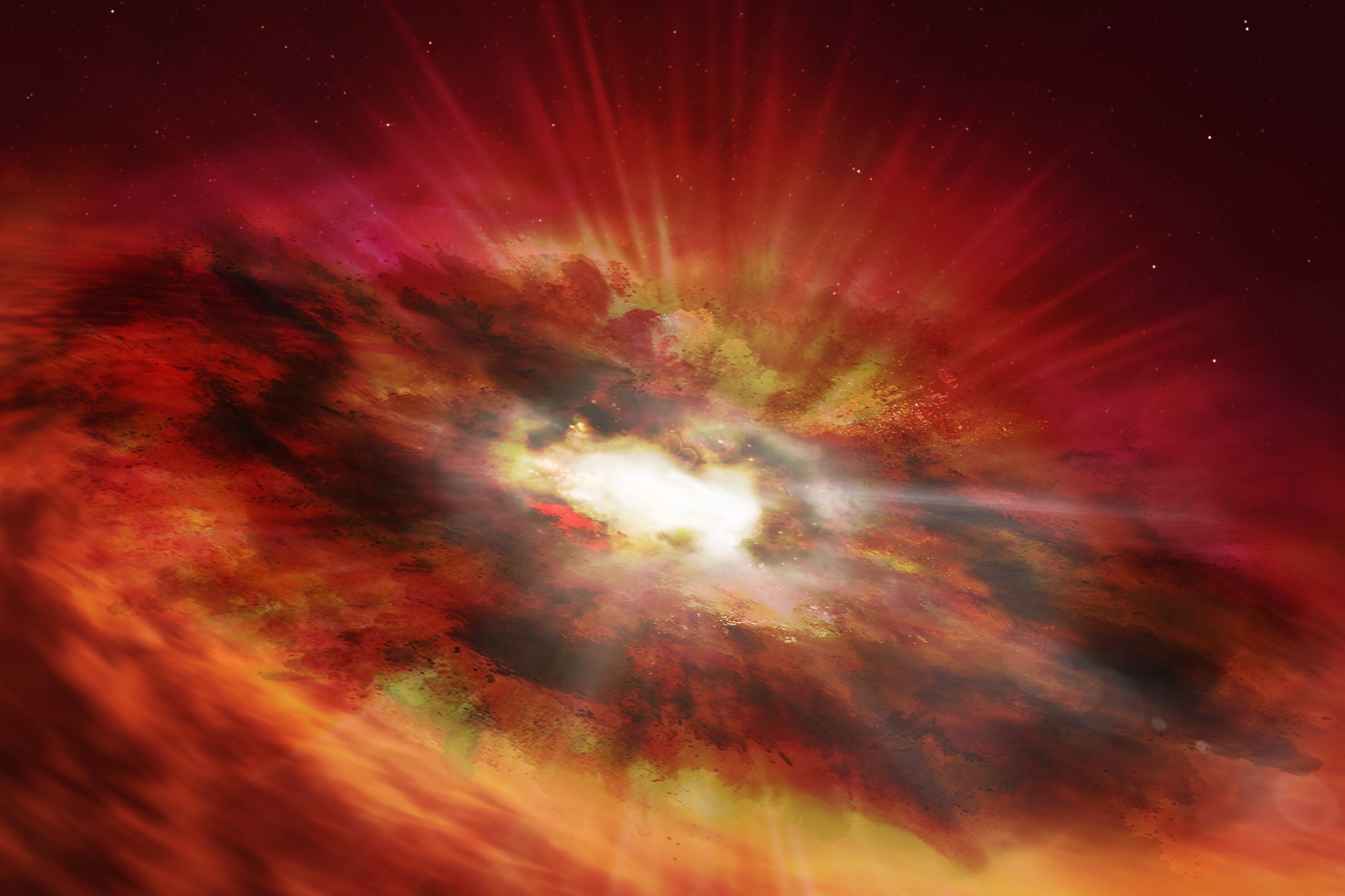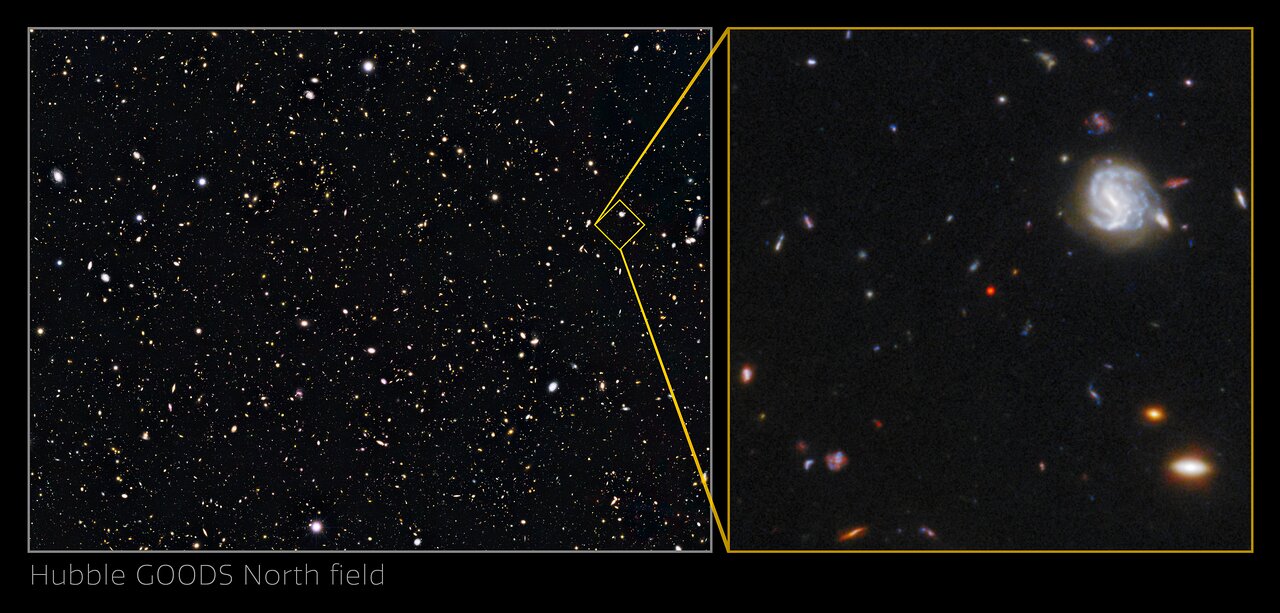Fast growing black hole discovered
Astronomers have known for a while that the centers of most galaxies are home to supermassive black holes. With ever-improving methods of investigation, they have been able to trace these giants far back into the past. They must have existed as early as 750 million years after the Big Bang. This raises one of the biggest mysteries in astronomy today: How could these supermassive black holes, which weigh millions to billions of times the mass of the Sun, grow so large so quickly?
Current theories hold that supermassive black holes begin their lives in the dust-shrouded cores of galaxies with strong star formation (starburst galaxies) before ejecting the surrounding gas and dust and appearing as brightly glowing quasars. Today, these objects are very rare, but researchers were able to detect both dusty starburst galaxies and luminous quasars in the early universe.
But what was still missing was a link: the fish with legs, or the dinosaur with wings, so to speak. An international team of astronomers, using archival data from the NASA/ESA Hubble Space Telescope and other space- and ground-based observatories, has apparently now been able to discover a unique object in the distant, early universe that could provide that crucial link. The object in question is called GNz7q. It exhibits features of a dusty starburst galaxy as well as those of a quasar, with the quasar light reddened by dust. In addition, GNz7q lacks other features normally observed in typical very bright quasars (corresponding to emission from the accretion disk of the supermassive black hole), most likely due to the fact that the central black hole in GNz7q is still in a young and less massive phase. These properties are a perfect match for the young, transition phase quasar that has been predicted in simulations but has never been identified in a region of similar high redshift to the very bright quasars previously identified up to a redshift of 7.6.
“GNz7q provides a direct link between these two rare populations and offers a new way to understand the rapid growth of supermassive black holes in the early universe,” said Seiji Fujimoto, an astronomer at the Niels Bohr Institute at the University of Copenhagen and lead author of the Nature article describing the discovery. “Our discovery provides an example of precursors to the supermassive black holes we observe in later epochs.”
Although other interpretations of the team’s data cannot be completely ruled out, the observed properties of GNz7q are in good agreement with theoretical predictions. GNz7q’s host galaxy forms stars at a rate of 1,600 solar masses per year, and GNz7q itself appears bright at UV wavelengths but very faint at X-ray wavelengths.
Normally, the accretion disk of a massive black hole should be very bright in both UV and X-ray light. But in this case, while the team was able to detect UV light with Hubble, X-rays were not visible even with one of the largest X-ray datasets. This suggests that the core of the accretion disk, from which the X-rays emanate, is still obscured, while the outer part of the accretion disk, from which the UV light emanates, is gradually being revealed. The super heavy black hole is thus gradually pulling back the curtain before stepping onto the largest stage in the cosmos.
“GNz7q is a unique discovery made right in the center of a famous, well-studied celestial field – it shows that great discoveries can also be hidden,” comments Gabriel Brammer, another astronomer from the Niels Bohr Institute at the University of Copenhagen and a member of the team behind this result. “It is unlikely that the discovery of GNz7q in the relatively small survey area of GOODS-North was just ‘luck’. We suspect that the abundance of such sources may actually be much higher than previously thought.”

